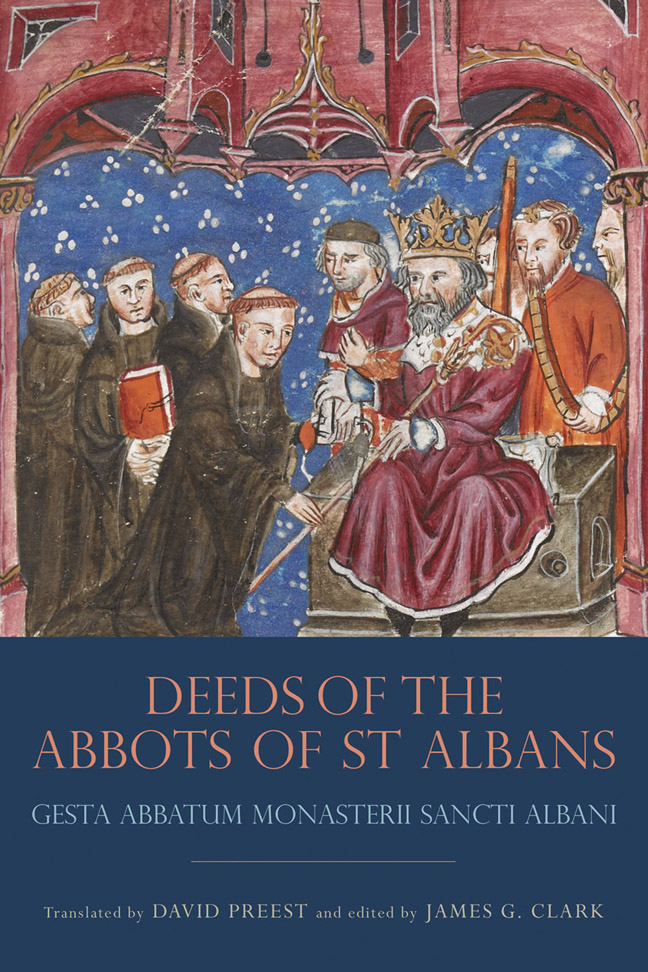Book contents
- Frontmatter
- Contents
- List of Illustrations
- Acknowledgements
- List of Abbreviations
- Introduction
- The Translation and its Sources
- The Deeds of the Abbots of St Albans
- Appendix A Thirteenth-Century Précis of the Deeds of the Abbots of St Albans: British Library, MS Cotton Vitellius a XX
- Bibliography
- Index
Introduction
Published online by Cambridge University Press: 17 February 2024
- Frontmatter
- Contents
- List of Illustrations
- Acknowledgements
- List of Abbreviations
- Introduction
- The Translation and its Sources
- The Deeds of the Abbots of St Albans
- Appendix A Thirteenth-Century Précis of the Deeds of the Abbots of St Albans: British Library, MS Cotton Vitellius a XX
- Bibliography
- Index
Summary
The Deeds of the Abbots of St Albans recounts thirty life-stories from seven hundred years of the monastery's history, from its reputed Saxon foundation, in the wake of the first Viking invasion, almost as far as the final century before the Reformation. The stories convey some of the most vivid sketches of biography to survive from medieval England. The men remembered as the heads of this great house are recalled not only for their prelacy but also their personality. These were no insipid, monochrome models of a monastic ideal. Here we find the pioneer church-builder who failed to finish what he started and was so careless he ruined those treasures he inherited (Geoffrey de Gorron); the ascetic who subjected himself to physical mortifications that rivalled the Desert Fathers yet was an irrepressible litigant, always looking to make his case before the justices (Thomas de la Mare); the Paris-trained theologian was a memorable wit who could chant the psalter backwards and coughed out a final couplet of light verse with his dying breath (John of the Cell). These are portraits from the life. The reader meets the abbots as their monks knew them, tall and handsome, horribly fat, or apparently as old-as-the-hills. In fact these impressions speak to all of the senses: they are heard to preach, sing and shout out in argument; those sadly afflicted by chronic sickness are said to have given off an unpalatable scent as they passed, one of them wrapped in a habit whose stains were crusty to the touch. Even the earliest in the line of succession, those claimed to have been St Albans’ custodians before the year 1000, are shown with a little light and shade, good men, bad, and one of them said to have been the very worst (Wulsig); men of vocation, worldly men who would not leave the world behind them, and men focused clearly enough to record their family name or their facial features.
The thirty abbots are reanimated so memorably because the Deeds is a blend of history and memory. There is a ballast of documentary records that is added to the narrative in increasing quantity as it reaches forward in time. Yet it is never more than a selection of the evidence that might have been incorporated and scarcely ever is it transcribed verbatim.
- Type
- Chapter
- Information
- The Deeds of the Abbots of St Albans<i>Gesta Abbatum Monasterii Sancti Albani</i>, pp. 1 - 35Publisher: Boydell & BrewerPrint publication year: 2019

